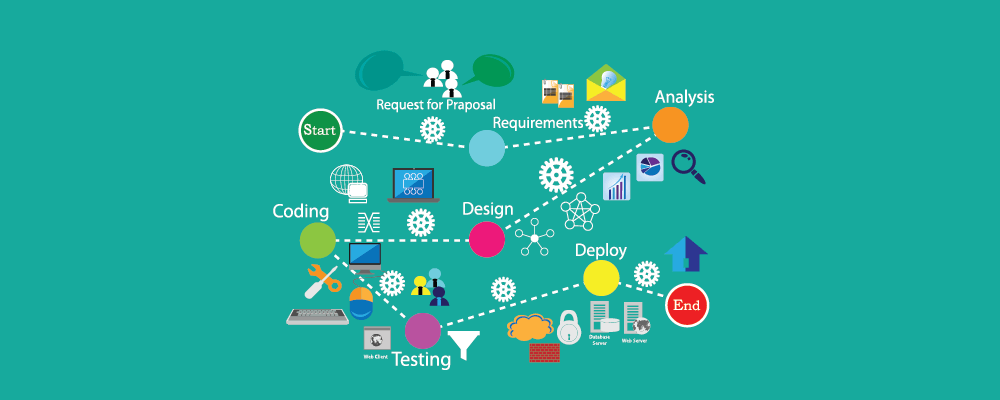Software Testing and Defect Bug Life Cycle are like two brothers from the same mother. They always go hand in hand when a project is being developed in the organizational paradigm.
In this article, we will tell you all about the different stages of the Defect Bug Life Cycle that the software testers go through to provide a seamless and bug-proof product to their customers. Also, there are some frequently asked questions provided in the article to let you know about the queries testers answer daily.
One thing you have to remember is that the main purpose of performing a testing activity is to check whether the product has any hidden secrets that can damage the product and ultimately damage the reputation of the team and the company. Let’s start at the very beginning.
What is a Defect?
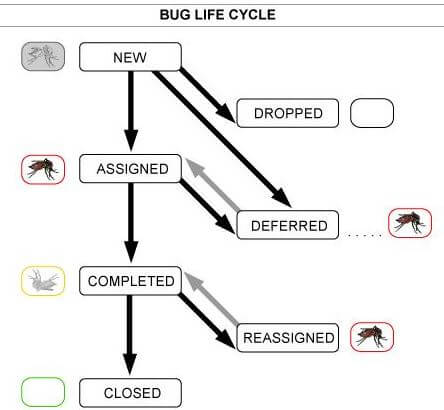
In laymen’s terms, a defect is any form of error or obstacle that comes between the software testers or users and seamless execution of the application. This error tries to hinder the execution by mismatching the expected behavior of the software with the actual one.
This defect comes into existence when the developer, at any stage of the development, cycle makes a mistake voluntarily or involuntarily in the functionality of the software, and when the software tester finds this mistake, they name it a defect.
It is the responsibility of the testing team to find as many mistakes in the application as they possibly can so that they can get it fixed by the development team or they do it themselves, to make sure that the user gets a seamless execution of the application and not a defect-filled one.
One thing that the software testing team has to make sure is that they have to study the defect life cycle and becomes the masters of it so that when they commence the defect workflow and start working on the different stages of the defect life cycle, they would at least know what they are doing.
Check this out:
Top 5 Resources for QA Performance Analysis
Defect Bug Life Cycle in Detail
A defect life cycle or a bug life cycle is a cycle of different stages through which a defect or a bug passes right from the moment it is discovered by the software testing team to the point when the tester declares that this defect has been diffused and it would never reproduce again.
Defect States
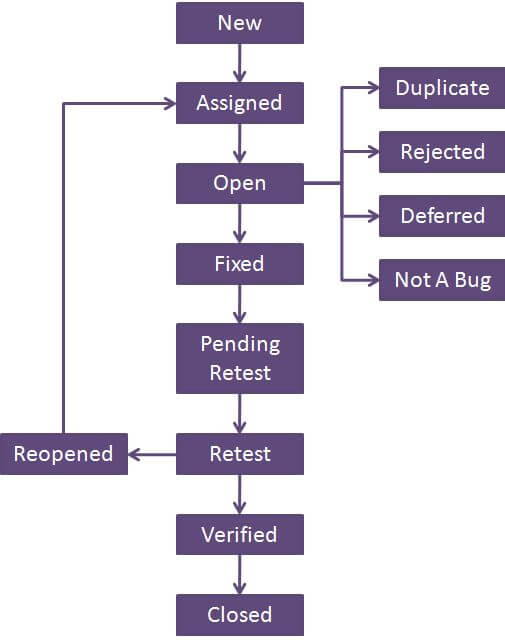
The following are some of the states through which the bug or defect passes in the defect/bug life cycle. They are as follows:
- New: When the testing team finds out the mistake in the code and they name the mistake a defect, it automatically falls into the “New” state.
- Assigned: When a mistake is termed as a defect and put into the “New” state, it is assigned to the dev team to be worked on. This duty of telling the development team of what to do and what not to do falls on the shoulders of the project lead or the manager of the testing team.
- Open: In this part of the bug life cycle, the developers commence their activities regarding the tracking and fixing of the bug, if a fix is necessary. Why is there an “if” in this situation? Well, not all mistakes that are found by the testing team are a bug or a defect and it falls under one of these 4 states, depending on the reason.
These 4 states are, but not limited to the appended categories:
- Duplicate
- Deferred
- Rejected
- Not a Bug
- Fixed: When the defect or bug in question has been treated and no other fixes are required to diffuse the situation, the developer marks the bug as fixed.
- Pending Retest: After the developer has fixed up the defect, they send the application back to the tester to test if the bug is still being reproduced and till the tester retests the bug, the defect remains in the “Pending Retest” state.
- Retest: At this state of the bug life cycle, the tester starts to test the application again to see if the bug in question is being reproduced again.
- Reopen: If the tester has found the bug again while checking the application according to the parameters set by the developers, they change the status of the bug to “Reopen”.
- Verified: If the tester does not find an issue in the application when the developer puts the bug in the “Retest” state then the bug is shifted into the “Verified” state.
- Closed: This is the state where the bug is shifted to if the tester does not find any traces of the bug being able to reproduce.
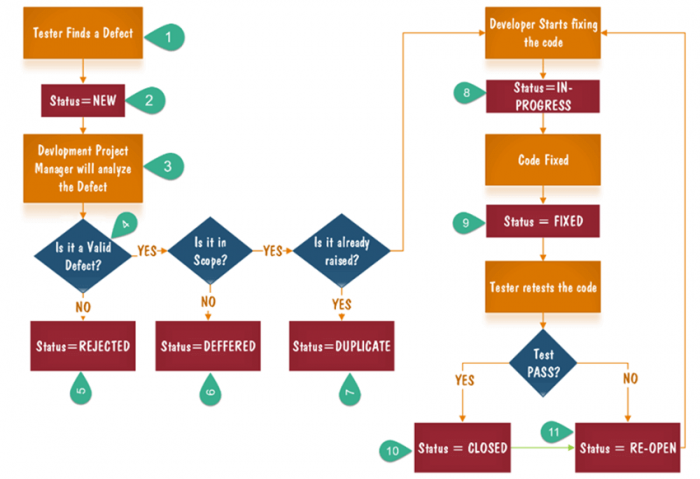
Some other defect states are:
- Rejected: This is the state where the bug is put into when the developer does not consider the mistake in the code a genuine defect.
- Duplicate: This is the state where the bug is housed if it matches the description of some other defect that already exists in the defect log of the application.
- Deferred: This is the state where the bug is shifted to if the developer feels that the bug is not that harmful to the application at this stage and can be removed in the later releases or so.
- Not a Bug: If the testing report comes back and the team finds out that the defect is not at all harmful to the application, they put it in the “Not a Bug” state.
What are the Specific Guidelines to Implement the Defect Bug Life Cycle?
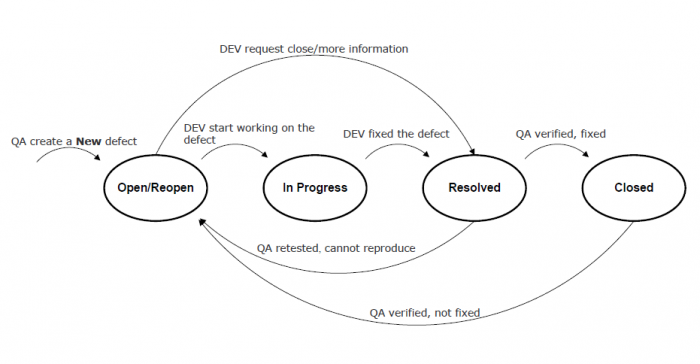
The following are some of the guidelines that need to be followed to achieve a successful implementation of the Defect Bug Life Cycle. They are:
- It is very important that before starting to work on the Defect Life Cycle, the whole team clearly understands the different states of a defect
- Make sure that each individual who has been assigned any task related to the Defect Life Cycle should understand his/her responsibility very clearly for better results
- The defect tracking tool should be handled with care to maintain consistency among the defects and thus, in the workflow of the Defect Life Cycle
- Defect Life Cycle should be properly documented to avoid any confusion in the future
- Each individual who is changing the status of a defect should be properly aware of that status and should provide enough details about the status and the reason for putting that status so that everyone who is working on that particular defect can understand the reason of such a status of a defect very easily
More Info on Defects
- A defect can get introduced at any point in the Software Development Life Cycle
- The cost of quality is minimized when the defect is removed in the same phase in which it was introduced
- In Dynamic testing, the presence of a defect is revealed when it causes a failure
- Earlier the Defect is detected and removed, lower will be the overall cost of quality
- Static testing finds the defect, not a failure.
Read more:
Your Go-To Guide to Create a Quality Management Plan
Duplicate/Invalid Bug Report
- Sometimes when the bug comes forward, it not because of the code but because of the testing environment in which it was discovered or there is supposedly a misunderstanding in the testing process. This is an invalid report and the defect is termed as an invalid defect
- It is in the hands of the Defect Management committee to determine the validity of each bug or defect and determine the itinerary of the process highlighting the details about when the bug will be fixed or deferred
- Participants include Test Manager, Developers, PM, Product Manager, and other stakeholders, who have an interest
- The Test Manager owns the overall Defect Management and process and the Defect Management tool cross-functional team is generally responsible for managing the reports
- In the case of Duplicate Report, one is kept and one is closed as a duplicate.
- If the defect has to be fixed, its priority has to be determined
Defect Data
- Type of Testing
- Detailed Description of Defect
- Life Cycle Phase
- Severity and Priority
- Project Activity occurring when the Defect is introduced
- Type of Defect
- Current Owner
- Work product where Defect occurred
- Risk, loss, opportunity, and benefits associated with fixing or not fixing the defect
- The description of how the defect was resolved and recommendations for testing
- Name of the Person
- Problem Summary
- Steps to Reproduce
- Work product where Defect was introduced
- Subsystem or Component where the Defect is introduced
- Identification Method
- Project and Product in which problem exists
- The current State of Report
- Impact on Project
- Dates when various defect lifecycle phases occur
- References
Important FAQs on Bug Life Cycle

1. What is considered as a proper defect in software testing?
A defect or a bug is some error or hindrance between a user and a seamless execution of the software in question. This bug or defect is processed through the different stages of the bug life cycle to the point when the tester declares it harmless and put it into the “Closed” state.
2. What is the major difference between Defect, Error, and Failure?
Defect: When the testers find out that there is a mismatch between the expected behavior of an application and the actual behavior displayed by it in real-time in the testing phase, they name this scenario as a “defect” in the application.
Error: When the developers find out that there is a mismatch between the expected behavior of an application and the actual behavior displayed by it in real-time in the development phase, they name this scenario as a “defect” in the application.
Failure: When the customers find out that there is a mismatch between the expected behavior of an application and the actual behavior displayed by it in real-time in the production phase, they name this scenario as a “Failure”.
3. What is a Defect Report?
A defect or a bug report is a detailed account of the defect that has been hindering the execution of the application or mismatching the expected behavior of the application from the actual one.
4. What type of details is present in a Defect Report?
The following entities are included in a traditional Defect report. They are:
- Defect ID of the Defect in question
- Feature Name
- Whether or not the Defect is Reproducible
- The severity of the defect
- Name of the Tester assigned to the defect
- Build Version in which the defect was found
- A Thorough Description of the defect
- Test Case Name
- Status in which the defect is currently
- The priority of the defect
- Date of testing the defect
- Name of the Developer who has been assigned to remove the defect
- Name of the person who successfully got rid of the defect
- Screenshots of the defect
- The date on which the defect was successfully fixed
- The name of the person who approved the defect
Conclusion
This was all there is to know about the Bug Life Cycle and how the testing and development teams work to make the application that reaches the customers, bug/defect-free.

